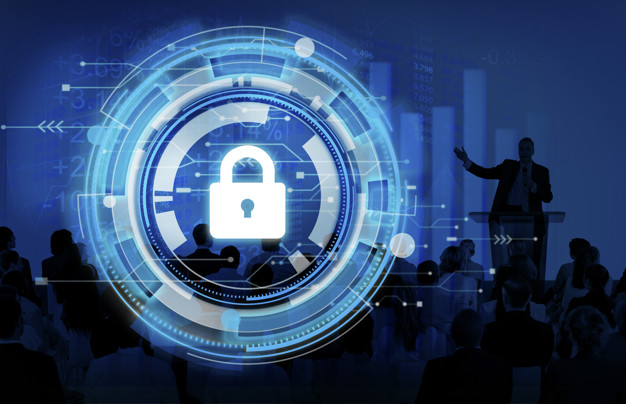30 Jun

|
Getting your Trinity Audio player ready...
|
The number of remote workers has immensely grown nowadays because of the Covid-19 pandemic. So, there is an urgent need for businesses to take additional measures for their sensitive data protection. IT crews in many companies are busy dealing with the increasing numbers of remote connections that can be rather dangerous for the overall business systems.
Using various applications from homes and other locations, such as public places, imposes some additional threats on collecting, maintaining, and transferring information on all the personnel, sales departments, IT, and accounting. Therefore, something should be done about enhancing online security and building up new chains and policies to achieve that.
I want to share some thoughts and ideas based on personal experience of the previous months on how to protect sensitive data, protocols, outlines, and online communication channels from the unauthorized access of third parties and hackers. I’ve attempted to compile some useful techniques and tips in this short guide.
Table of Contents
Using remote branches
Software developers widely use this method. IT companies utilize remote branches to establish connections with colleagues who work remotely over the same project. First of all, the technology is meant for developing new features or bug fixing without overloading the main development chain with extra data.
Branches are not exact copies of the main code but just pointers to the initial node that can add much security to the overall information enclosed in codes and patterns.
You can use such developments as Git, Subversion (SVN), or Concurrent Versioning System (CVS), and some other cybersecurity protection means – antivirus programs and malware defense applications. Undoubtedly, these are the tools I trust most and have been using in practice. You can find the most common instruments that are widely used in the IT businesses while browsing the Net.
Since creating remote branches is the most appropriate way to exchange information with remote teams securely, try to learn how to use this instrument correctly. You need to know how to create a local branch from the remote one, how to turn it into the remote one again, and how to regularly check out this branch. This knowledge will allow you to experiment with new developments and enhance the overall protection to keep all your code information secure.
While the basic social objectives of intellectual property protection areas are outlined above, it should also be noted that the exclusive rights given are generally subject to a number of limitations and exceptions, aimed at fine-tuning the balance that has to be found between the legitimate interests of right holders and of users.
Developing cybersecurity policy
If you are a business owner or manager, you may feel concerned about data security and confused about defining whose responsibility it should be. You would need to know how to keep the employer and employee’s data protected in remote work conditions.
Of course, you cannot forbid your workers to do their job from the place where they feel most comfortable, be it a local bar or a bench in the park. Though, you can take some simple measures to make them aware of your company’s cyber policy.
Ask all your new and current employees to sign a copy of the company’s cybersecurity policy document. Require such a signature from all the workers, no matter whether they are doing things remotely or in the office. This document should contain:
- the reasons for having this specific policy;
- the details of all security protocols your workers should follow and correspond to;
- the straightforward explanation of all tools and resources the company is going to provide;
- the fines and penalties for breaking these rules and guidelines;
- a special place where an employee should sign the document meaning their commitment to observing all the rules.
Everyone in the company should understand that they are in charge of protecting their employer’s information and realize what consequences to expect when they break these policies and regulations.
Security of Internet connections does matter
A company is exposed to information security breaches and data leaking when its employees use unsecured Wi-Fi connections, which are common at coffee shops or railway stations. Instead of forbidding your workers to perform their functions from such places, recommend some measures to prevent any negative outcomes. For example, using a VPN (a virtual private network) effectively encrypts the Internet traffic from the laptop of your remote worker. Explain the difference between VPNs and Proxy servers to ensure no one in your organization is using illegal connections or fake accounts.
Your workers should also be advised on what kind of VPNs to use because not all of them are legit and of good quality.
Use two-factor authentication
2FA or two-factor authentication is an important means of managing business security. The method consists of two stages. At the first stage, a worker should be identified by a username and password. The second stage implies using the answer to some secret question. Some systems also use PIN codes that are sent to a user’s phone.
The method is quite reliable. When you use a password only, keep in mind that it can be stolen at any time. With the second stage, the odds are minimal that someone will know the answer to the secret question or the PIN. Using this technique, remote employees and their organizations can feel more secure and protected, though 2FA is more sophisticated and costly. Thus, estimate all the pros and cons carefully before using it.
Other means to provide data security
Apart from the methods listed above, you may consider some other means and techniques to ensure information security protection for your company. They can refer to:
- Strong passwords that are regularly changed. The company can offer special password training, or it should use a password manager to randomly generate them. Such passwords are stored accurately and safely.
- Encryption software can be utilized for additional protection. Even if the device is lost or stolen, the encryption will bar unauthorized users from accessing it. All the applications meant for emailing or chatting should also be encrypted.
- Firewalls, anti-malware, and antivirus programs are a must. They should be set up on all devices the worker uses remotely. It would be great if a company could consider the option of remote wiping in such devices if they were occasionally lost.
- Technical support teams should be organized internally to help all workers with technologies and possible issues.
Some other techniques and methods are also applicable, and their choice depends on the company’s aims and goals.
Conclusion
All in all, remote work should not put extra pressure on business data security. Help the remote employees grow by offering online training and encourage them to use their devices safely. Even if an employee is not quite technologically savvy, they need to understand the basics of data security protection. IT companies, developers, and system administrators nowadays have a lot of means at their disposal to introduce and maintain data security, such as remote branches, encryptions, and secure Internet connections.
I hope the information provided in this guide will help your company improve security protection and continue developing under new conditions.


